Wednesday 16 March 2011
Amy Cooper
Painting conservator Angela Ruegger joined the Gallery team as one of our two Marylyn Mayo interns at the end of 2010. Angela can now reveal the fascinating work she's been doing on a special painting from the Gallery's collection.
Tell me about the project(s) you’re working on during this internship.
The focus of my internship is a 15th Century panel painting but I also carried out minor treatments on fifteen further paintings.
The greatest time was spent researching and restoring the panel painting St Anne, Mother of the Virgin Mary by the Girard Master.
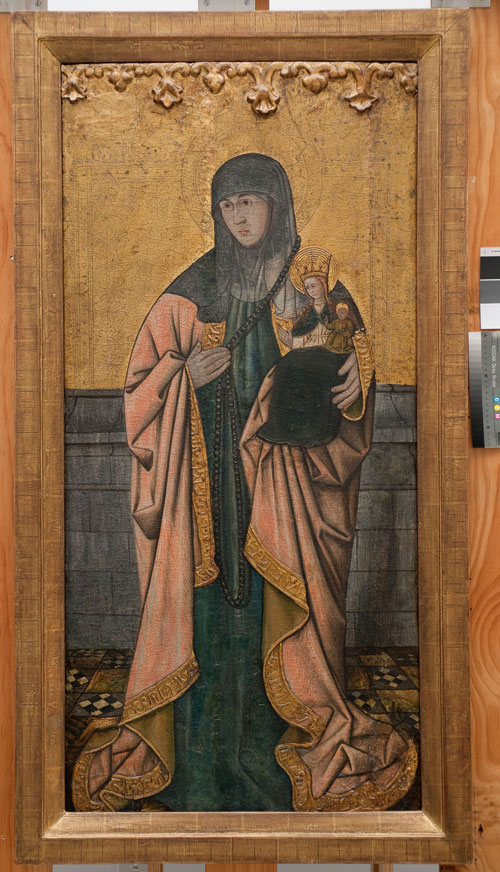
Pere Girard, Saint Anne, Mother of the Virgin Mary
c. 1470, tempera and gesso on panel
Auckland Art Gallery Toi o Tāmaki, gift of the Friends of the Auckland Art Gallery, 1966
It is mostly a research project, due to the time limitations of my internship. It is important to do thorough research of the structure before starting any major treatment. I have been able to use many different analytical techniques to examine the panel, including ultra-violet light, infrared rays, and x-ray imaging.
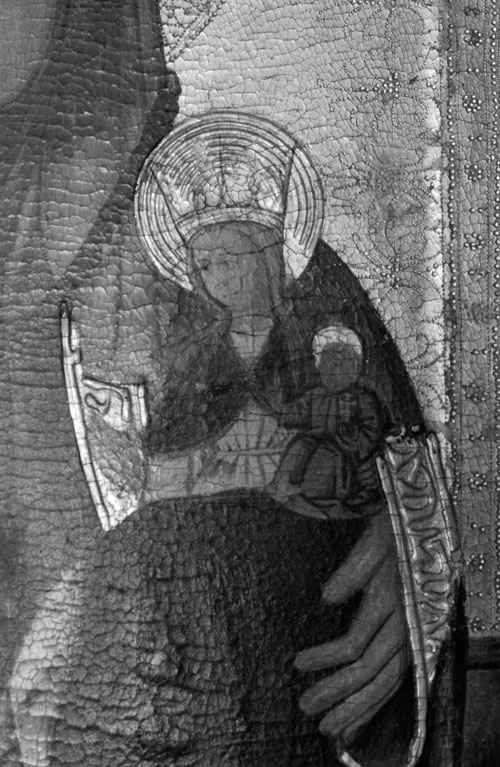
Infrared view of the panel
When we x-rayed the panel we could clearly identify knots of tree branches - one of the reasons for some of the paint layer damage visible from the outside. The past location of hinges could also be clearly be seen for the first time in the x-ray image, clarifying that it was probably a side panel to an altarpiece. Leaf fibres were also revealed – Spanish artists used to put fabric or fibres over joints during the preparation of the panel. Without damaging the painting, you can discover a lot which is not visible from the outside.
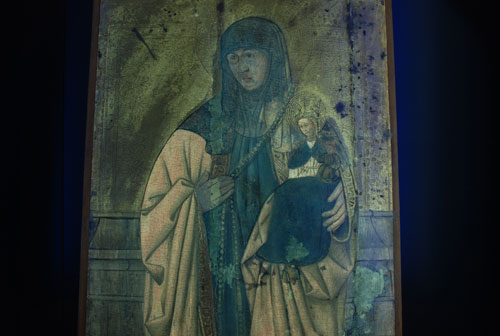
The panel under ultraviolet light
We were also able to go to the University of Auckland for elemental analysis and use the SEM- EDS (Scanning Electron Microscope) at the Research Centre for Surface and Materials Science. I took tiny cross-sections from an already-damaged area of the panel – samples that can hardly be seen with the naked eye.
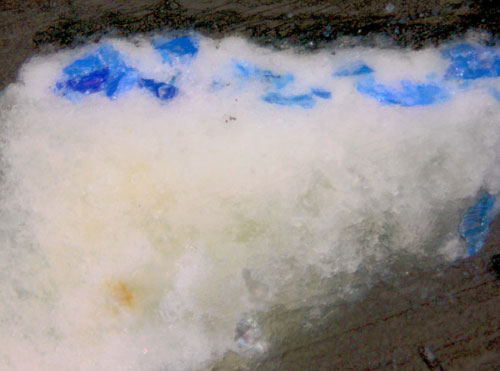
A cross-section of the panel
Scientist, Catherine Hobbis analysed the cross-section layers and established what elements they contained. This blue one for example contains copper, which indicates the pigment used was azurite. The pigments are really important if you want to match it to a specific time. The panel has been dated by experts to about 1470. I spent a lot of time researching what pigments were used in that period, and it turned out to be quite a narrow template - only about 14 or 15 different pigments. The pigment samples support a 15th Century date.
The panel also had some questionable restoration treatments before it got to the Auckland Art Gallery. For example, stripes were added to the floor pattern for some reason! It is very bizarre and does not fit compositionally. I have retouched this area to make it less obvious.
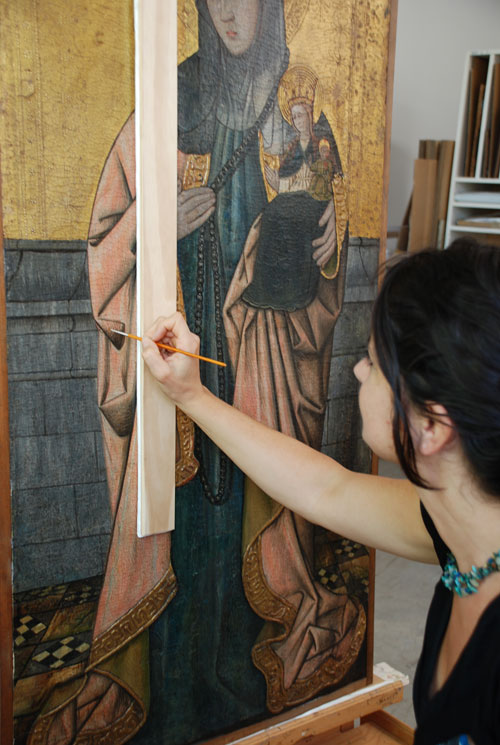
Restoring the panel
The more you look, the more you see. There is a lot to discover.
The panel is now quite stable and can be exhibited as it is. Overall, the conservation treatment is in its final stages. Ten weeks is too short for a full treatment - I am just treating it for exhibition. What I have been able to do will be helpful for a full and proper treatment at some point in the future.
What’s your background? How did you come to apply for the internship?
I am lucky enough to have worked at the Gallery before. I did volunteer work here prior to my conservation studies in Melbourne, and when I returned to Auckland, I worked as a conservation assistant for a few months. Since then I have returned for projects whenever possible. It has been good to stay in touch.
I have a Bachelor of Fine Arts from Whitecliffe, College of Art and Design in Painting. I then went on to the University of Melbourne, where I did my Masters in Conservation of Cultural Materials (Painting) with an internship in Greece. Since then I have worked here at the Gallery, across New Zealand and overseas, both at institutions and privately. It has been a huge advantage to speak several languages as it increases work opportunities.
What interests you about this subject/project?
This particular period of painting is one of my favourites – I did my thesis in Melbourne on icons. I like modern art too, but I find older artworks, especially Medieval and Renaissance artworks, more interesting to work with because of their painting techniques. There is so much craftsmanship behind what they were doing. Prior to this internship, I worked in Germany at the MHK Kassel, where my last two main projects also involved European old master paintings on panel.
What are the challenges you’ll be facing?
The panel is Spanish in origin, and I have found there is not much information on Spanish painting compared to Italian, Dutch and German. There are fewer resources to draw from. It is a challenge trying to find out where the panel comes from. This panel has no signature, the dates are unsure, and we have no trace that it belonged to any museum or private collection. We know that it was bought in London in 1966 by the Friends of the Gallery, but we don’t have much information before then - or since it’s been at the Gallery.
The depiction of the popular subject matter is different and interesting as well – St Anne with the Virgin Mary and Christ all sitting on each other’s arms with diminishing sizes is unusual, there aren’t many paintings like that.
What do you hope to get out of it personally?
The experience of working with paintings of the collection is fascinating and always a learning curve. Being able to do so much research is a real privilege– this time I have had a lot of time to do research and analyse data. Working with Sarah, who knows so much about conservation and research, has been fantastic – it is a great help having someone to guide you. Working in the lab alongside the other conservators is always great, they all have great skills and lots of diverse knowledge.
- Angela Ruegger